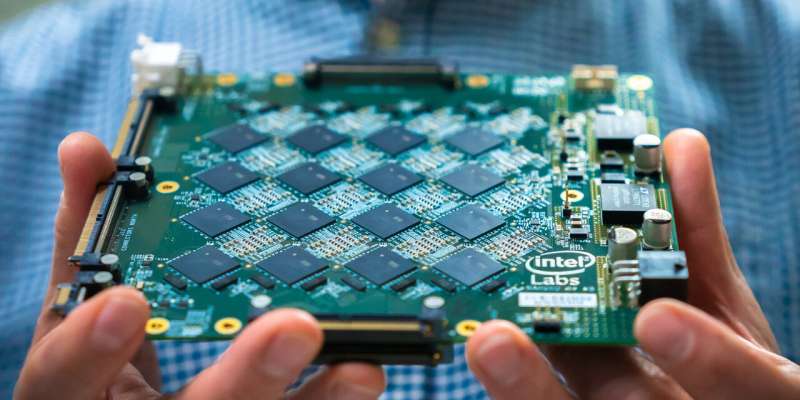Since we’ve already talked about quite a bit regarding neuromorphic computing this week, let’s recap the key differences between these two technologies. Neuromorphic computing and deep neural networks are two distinct approaches to artificial intelligence (AI) and machine learning, each with its unique characteristics and goals.

Deep Neural Networks (DNNs): Deep neural networks are a type of artificial neural network (ANN) with multiple hidden layers. They are modeled after the structure and function of the human brain, with interconnected nodes or “neurons” designed to recognize complex patterns and relationships in data. DNNs learn by adjusting the weights of these connections based on input data and error gradients, with backpropagation being the most common method for this. Deep learning, which is a subset of machine learning that relies on deep neural networks, has achieved remarkable success in various applications, such as image recognition, speech recognition, and natural language processing.
Neuromorphic Computing: Neuromorphic computing is a field of AI research concerned with building hardware systems inspired by the structure, function, and plasticity of biological neural systems, particularly the human brain. It aims to develop new computing paradigms that can learn, adapt, and process information more efficiently and effectively than conventional digital computers. Neuromorphic systems use adaptive, event-driven, and analog hardware to mimic the behavior of biological neurons and synapses. Instead of using a network of interconnected digital nodes that mimic artificial neurons, neuromorphic computers typically use a network of analog, physical devices that can learn and respond to input in real time.
Key Differences:
-
Inspiration: While deep neural networks are inspired by the structure and function of biological neural systems, neuromorphic computing aims to build hardware systems that directly mimic the behavior and properties of these systems.
-
Complexity: Deep neural networks are software-defined and can be implemented on conventional digital computers. Neuromorphic computing, on the other hand, requires specialized hardware architectures and analog devices.
-
Learning: Deep neural networks learn by adjusting the weights of artificial synapses based on input data and error gradients through backpropagation. In contrast, neuromorphic systems can learn and adapt through various mechanisms, including spike-timing-dependent plasticity (STDP) and synaptic scaling.
-
Adaptability: Deep neural networks can only process data that is provided to them, while neuromorphic systems can process and respond to input in real time and adapt to changing environments.
-
Power Consumption: Deep neural networks require significant computational power and energy to perform complex computations, especially when dealing with large datasets. Neuromorphic systems, due to their event-driven and analog nature, can process information using significantly less power compared to digital computers.
-
Hardware Design: Deep neural networks are usually implemented in software on general-purpose hardware, while neuromorphic computing requires custom hardware designs to implement the analog and event-driven processing at scale.
In a recent advancement within the realm of neuromorphic computing, a collaborative study by Graz University of Technology and Intel, highlighted in Nature Machine Intelligence, has showcased the potential of brain-inspired chips to revolutionize AI hardware. This research demonstrates that neuromorphic chips can operate DNNs with unparalleled energy efficiency—up to 16 times more efficiently than traditional computing hardware. By employing the concept of “neuronal laziness,” akin to the natural resting phase of human brain neurons, these chips not only promise substantial energy savings but also open new avenues for AI applications to learn and process information in more sophisticated and brain-like manners. This breakthrough represents a significant leap towards creating AI that is not only more sustainable but also capable of complex cognitive functions in a manner that closely mimics human intelligence.
While deep neural networks are a powerful software-based approach to recognizing patterns and relationships in data, neuromorphic computing represents a hardware-based approach to building adaptive, efficient, and event-driven systems inspired by the structure and function of the human brain. Both approaches have unique strengths and challenges, and continued research in both areas is essential to advancing the field of AI.

